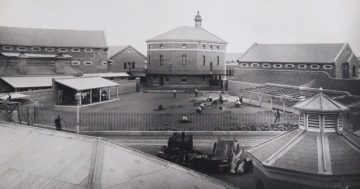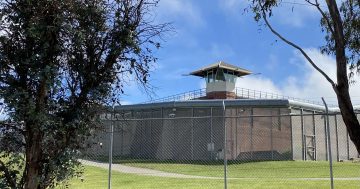
The Cooma Correctional Centre has turned 150. Photo: Gail Eastaway.
One of the oldest gaols in NSW, Cooma Correctional Centre (Cooma Gaol) recently celebrated 150 years of operation.
The gaol began with 31 cells on 1 November 1873.
The centre currently operates as a minimum- and medium-security facility for men. It is one hour’s drive south of Canberra and 410 km from Sydney, in the Snowy Monaro region of NSW.
Cooma Correctional Centre is predated by other NSW gaols including Berrima Correctional Centre, which commenced operations in 1839 and the Old Darlinghurst Gaol, which was built in the 1920s and housed inmates from 1841. However, Cooma is the only one of the three that remains operational.
The gaol was opened in response to population growth in southern NSW, especially on the Kiandra goldfields.
Over the past 150 years, the site has been used for a number of purposes, including as a police gaol, a temporary asylum and to store sensitive documents during World War II.
Following the end of the local gold rush, there was a reduction in crime and in 1876, Cooma Correctional Centre was repurposed as a police gaol for holding temporary and short-term inmates.
In 1877, the correctional centre functioned as a temporary asylum, housing 64 patients. The patients were brought down from Sydney, where asylums were overcrowded.
These patients were later moved to Callan Park facility in Sydney and the gaol continued to function as a police gaol.
In the early 1900s, Cooma Correctional Centre was temporarily closed.
During the first decades of the 20th century, it housed young boys from the Carpentarian Reformatory in Sydney and in World War I, secret and sensitive documents were stored at the gaol due to its remoteness and security.
In March 1957 the correctional centre was reopened as a dedicated prison for homosexual offenders. This followed the strengthening of laws against homosexuality and ensuing moral panic, which led to a belief homosexual offenders should be segregated from non-homosexual inmates.
It was the only gaol in NSW set aside for this purpose. The practice continued until 1984 when laws against homosexuality were abolished.
During the 1970s, Cooma Correctional Centre acquired 330 acres to be used as a prison farm site. Inmates developed a thriving agricultural practice, including a trout hatchery.
Today, inmates at Cooma are still heavily involved in farm work and supporting local wildlife.
Over the years, inmates have been involved in programs to raise orphaned lambs and assist local farmers.
Another initiative saw inmates manufacture devices to administer medication to mange-affected wombats.
The correctional centre currently has a thriving dog rehabilitation program in partnership with the RSPCA. This sees inmates care for, and assist with, training of vulnerable dogs before they can be rehomed.
The NSW State Correctional Museum in Vale Street, adjacent to Cooma Correctional Centre, pays homage to the 200-year penal history of incarceration in Australia – from convict days to present.
The museum hosts a collection of displays, including objects that relate to punishment and crime such as manacles, leg irons, clothing, weapons and escape devices and other visual documentation.
There are constant additions to the museum collection including a new permanent exhibit, ‘Caring for the Incarcerated’ – a history of the NSW prison medical service.
Notable inmates at the centre in recent years have included Eddie Obeid, Roger Rogerson, Selim Mehajer and Jarryd Hayne.
A temporary exhibition has been erected to pay tribute to the 150th anniversary of Cooma Correctional Centre.










